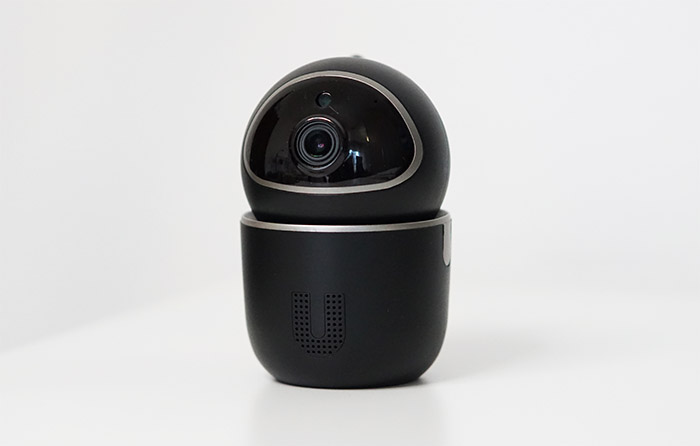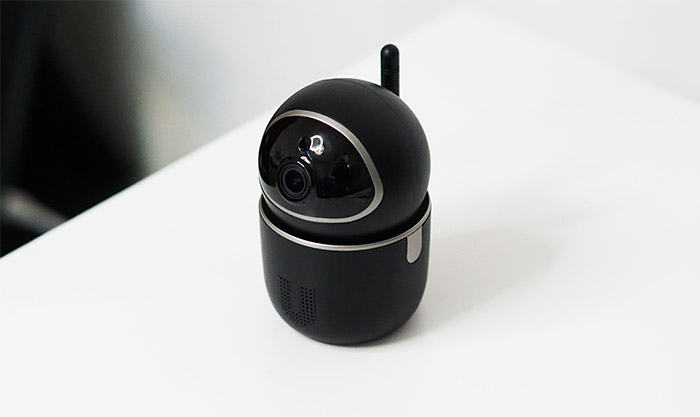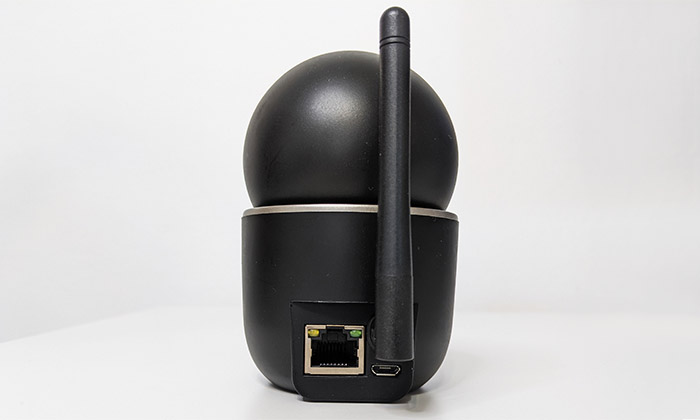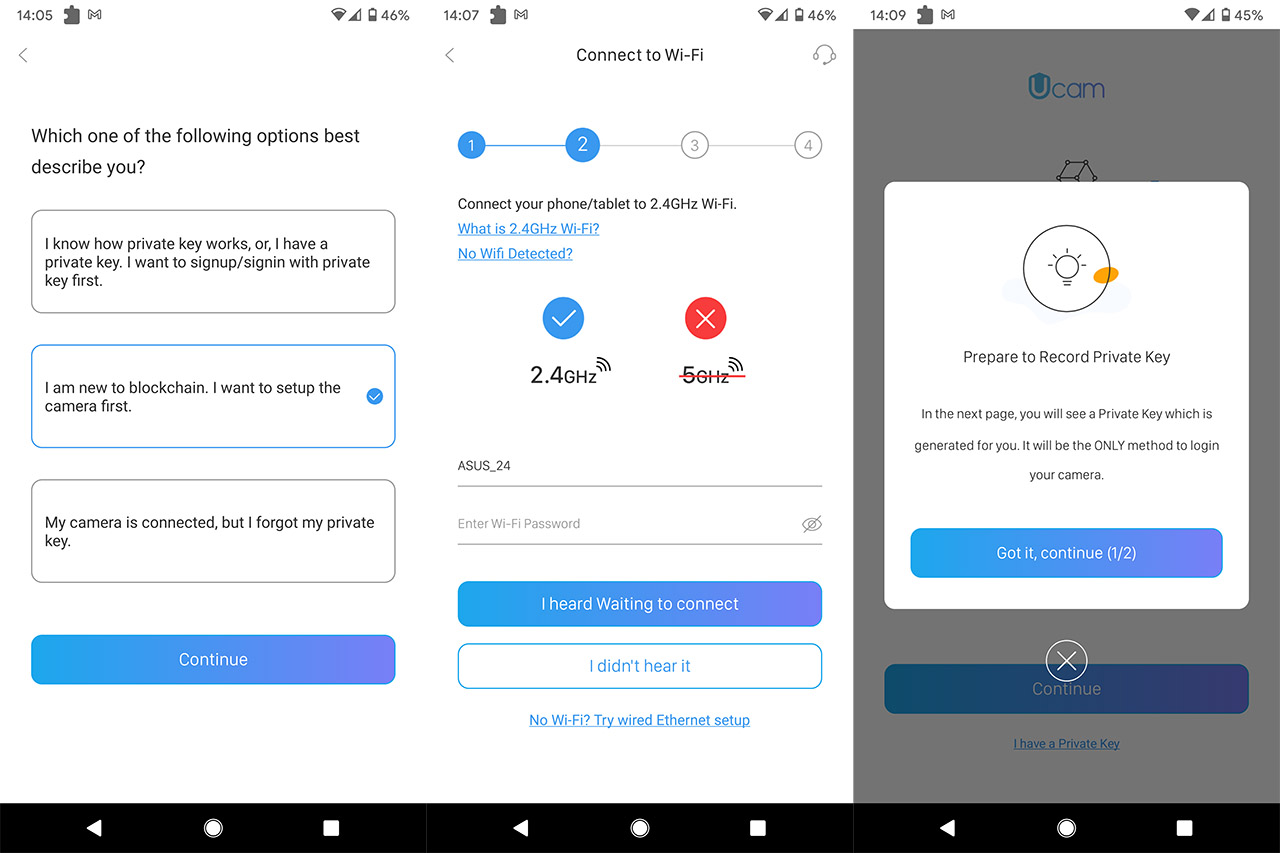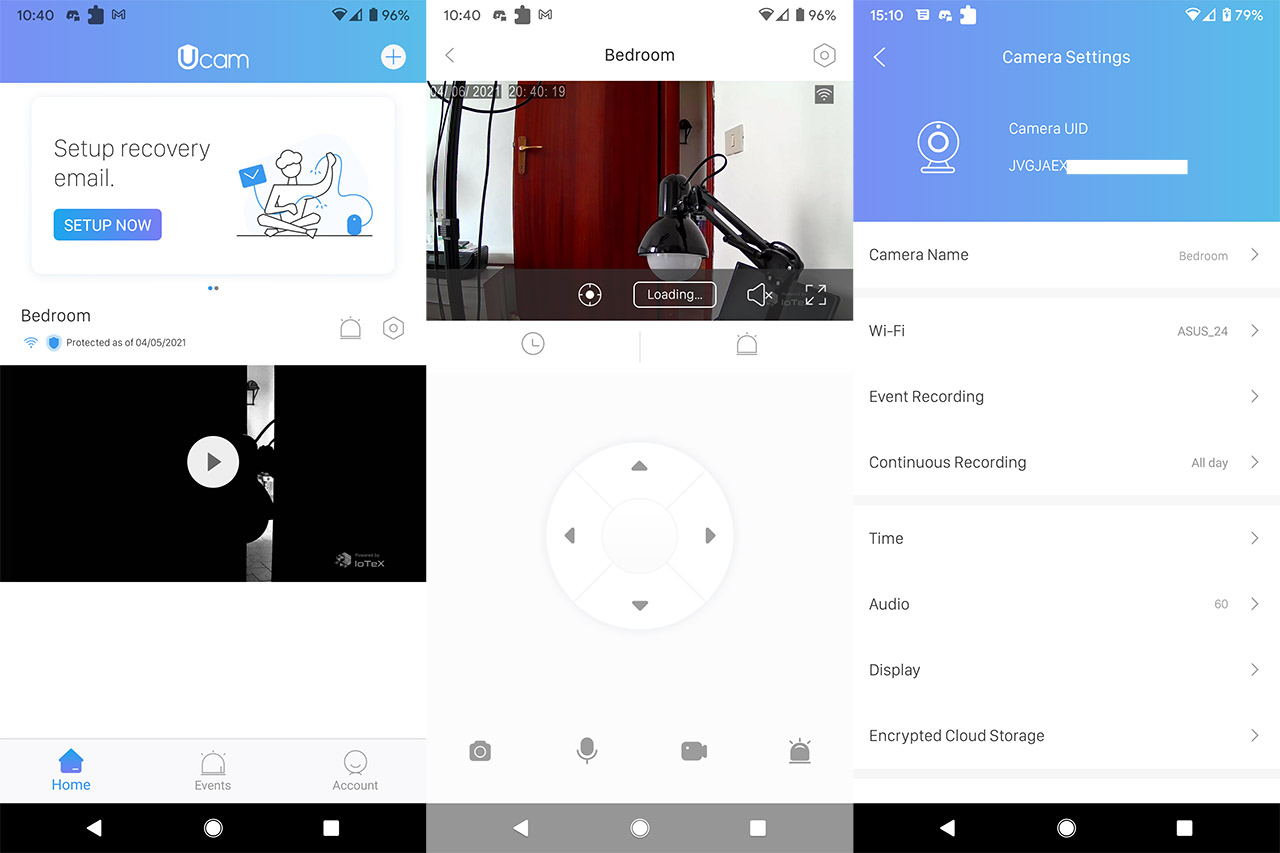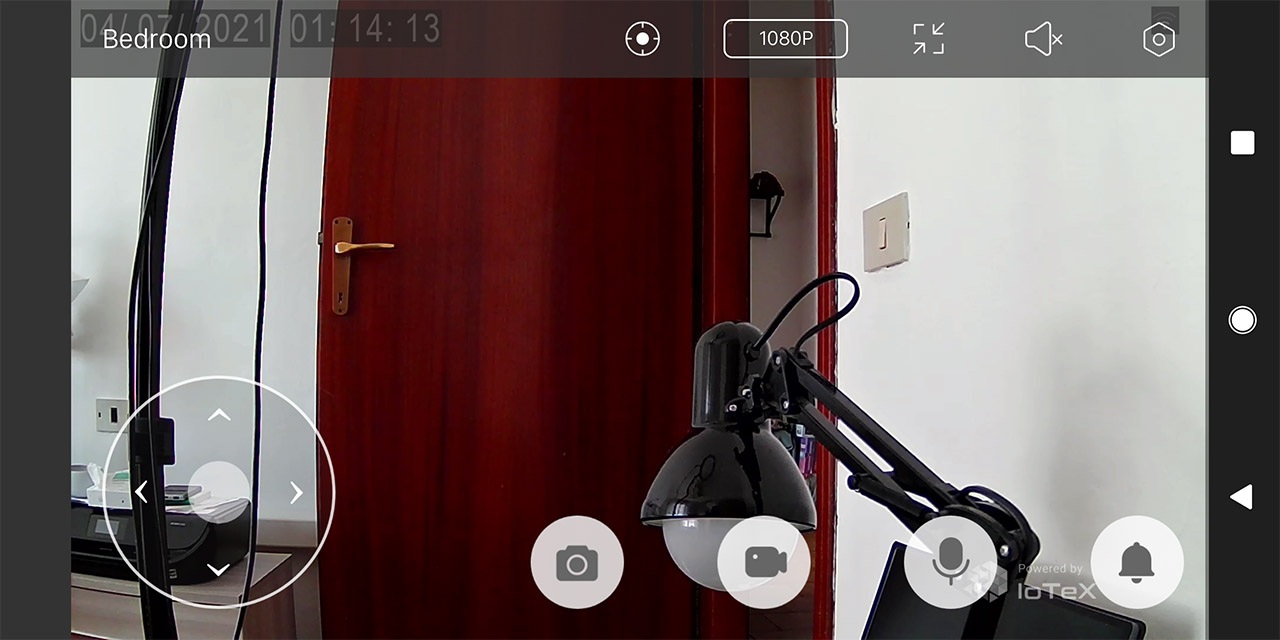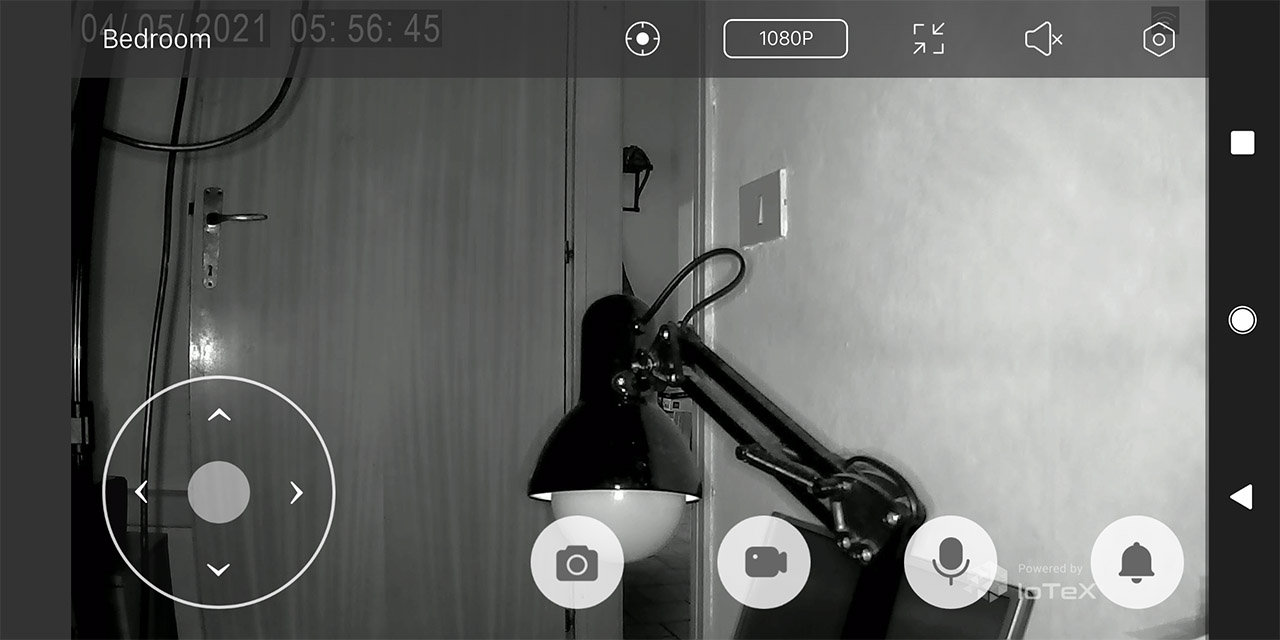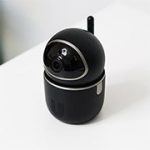The Ucam camera was born from the collaboration between the prolific camera maker Tenvis and the security focused start-up IoTeX in an attempt to showcase the new blockchain application for ensuring the security of your footage and, implicitly, your privacy.
| Tenvis IoTeX Ucam | |
|---|---|
| Ucam.iotex.io | Check Product |
IoTex has been in the news a bit over a year ago after it won the CES Innovation award for the Ucam due to the way it utilizes the blockchain technology to provide end-to-end encryption, so the communication between you and the server (to view the videos) cannot be intercepted and the blockchain-based authorization makes sure that only you can access the videos or the live stream. And no, there is no way to find out your private key by a third party which is both a good and a bad thing (if you lose the key, there is no way to recover it).
This should put a lot of people’s concerns to rest, especially those fearing the possibility of having a hacker stream the live footage of their homes on the Internet (and it has happened already to a lot of people) – the Ucam is immune to any security-related vulnerability. Sure enough, the security aspect is one of the most important aspects of an indoor security camera, but the hardware also needs to raise up to today’s exigence. The Tenvis Ucam does offer 1080p video resolution, two way audio, motion detection and night vision, so let’s check it out and see if it’s worth considering out of the thousands of models available on the market.
Design and Build Quality
The Ucam looks like your regular babycam, sporting a very compact case entirely made of plastic which is covered by a black matte finish, except for the front which is glossy black. The plastic is not that great and if I squeezed the spherical section, it does not feel very solid – also, if I shake the camera while keeping the base in my hand, the top section is very wobbly. The base is made out of a harder plastic, so it does feel more solid. As I said before, the camera is very compact and it measures 4.2 x 2.6 x 3.4 inches (it also weighs very little – only 8.0 ounces), so it won’t take much space from your desk or shelf. The good news is that you can also mount it on the wall by relying on the small plastic bracket that comes in the package (it’s a simple push and lock process). As expected, the Ucam was developed only for indoors use, so there is no water or dust protection, and it’s powered using a microUSB cable.
It doesn’t require much since I could easily keep it alive using a USB 3.0 port connection to my Desktop computer (5V/1A). The microUSB port rests on the rear side of the base section (it could have been a type-C port) and next to it, there’s an Ethernet port and an antenna. So yes, you do get two ways to connect the Tenvis Ucam to your router: a cabled connection or via WiFi – you can only connect to the 2.4GHz network. The Ethernet port is 10/100Mbps and I know that some of you may think that a Gigabit port would have been better, but considering the bitrate of the camera, even a Fast Ethernet port can be considered overkill. On the front of the base, there is a U-shaped speaker which, along with the microphone positioned next to the lens allow you to communicate with anyone in the vicinity of the camera. Above the lens, there’s a cut-out for the brightness sensor which enables the night vision and there are eight IR LEDs surrounding the lens.
Similarly to a lot of other indoor-suitable cameras, the angle adjustments are done automatically from the app, so you can tilt the Ucam up to 50 degrees and pan it almost full circle (355 degrees). It seems that Tenvis liked Reolink’s approach with its E1 Pro and E1 Zoom, so it has hidden the microSD card slot at the bottom of the spherical module and, in order to access it, you either have to point the view upwards in the app or by moving it manually. Again, similarly to some previous Reolink models, the support is only up to 64GB for microSD cards which is really not that much nowadays, but you do get access to the Cloud servers if you need to store more. It’s worth mentioning that next to the microSD card slot, there is a Reset button which is useful for returning the Ucam to its factory default settings (in case you want to re-pair it to a new router).
Blockchain and Privacy
I know that most people associate the blockchain with the cryptocoins and it’s fair since that’s what it was initially created for – to log all the transactions that happened with the bitcoin. But it has evolved beyond just that application, the Ucam being proof that you can use this innovative technology for privacy reasons as well. To get a better understanding why the blockchain is currently the most secure system which has never been hacked (for now) is by checking out how it works. I am not going to go in-depth with the explanation (you can check a proper description on Wikipedia), but as the name suggests, the blockchain is a collection of data blocks, each block being linked to the previous one in an interesting manner. After a block gets filled, it pushes some information towards the next one: the unique cryptographic hash, a timestamp and transaction data.
This way, in case someone tries to alter one block of info, all the other blocks need to be altered, otherwise, it’s very easy to spot the data tampering, therefore failing the validation.
IoTeX uses the blockchain to authorize your access to the videos and live footage by creating a unique 256-bit private key which you must not lose or share with untrusted third parties, otherwise, the security of your camera is compromised (of course, the key is authorized using end-to-end encrypted communication). This means that in terms of privacy the Tenvis Ucam is currently, the most secure IP camera available on the market and there is no risk that a hacker will stream footage from your home on the Internet.
Setup and Functionality
To set up the camera, you need to install the Ucam application (developed by Tenvis) which is available on both the Apple and the Play Store. After running the app, select what you wish to do: either sign up or sign in using an already owned private key, set up the camera (if you’re new to blockchain) or de-register the camera.
For now, select the second option and tap on Add New Camera. Connect the Ucam to a power source and wait until you hear ‘Welcome to Ucam’ (it’s best to do it at this time, otherwise, the camera will annoyingly continue repeating the message). Afterwards, you will have to give permission for the app to some services and insert the WiFi SSID password (in case you want to connect via wireless), but be aware that the camera will work only with the 2.4GHz radio band. Next, scan the QR code from the display using the camera and wait for the ‘Connection succeeded’ message. Now, you need to select the room where you will position the Ucam, create a Blockchain Identity and generate a Private Key. Be aware that if you forget this key, you cannot recover it, so Tenvis has included a couple of physical notes where you can write the private key and keep it safely in case you need it in the future.
If you lose your private key, you can still use the device, but only if you de-register (use the de-register email) and then issue yourself a new private key. Lastly, Apply the settings and you should now gain full access to the user interface. The UI will show the live footage on the top part of the screen and the bottom side is almost entirely occupied by a large icon that allows you to control the pan and tilt of the camera. The process is not very quick, so you will have to do small increments only (swipe and let go and repeat); there is a lag of a bit under one second (so, nothing dramatic). Within the live footage, there are a few quick action icons: the first is for returning the camera to its default position and the second is for selecting the image quality; the last two icons are for hearing the sound captured by the mike and for enlarging the view to fullscreen. The image quality has two settings available only: 360p or 1080p.
Image Quality
The Tenvis IoTeX Ucam uses a 1080p Full HD camera sensor (couldn’t find how many megapixel) which performs quite well indoors, where the brightness is rarely ideal. As you can see from the screenshot, using the best image quality, the footage looks great, there is little to no noise, the objects are clearly defined and, similarly to the Reolink cameras, the colors are a bit contrasty. But that’s a good thing since this way, the colors pop out quite a bit, avoiding the dull un-saturated videos delivered by some other camera brands. It’s worth noting that outside, it was cloudy and the brightness inside the room was far from ideal, but the Ucam could still ‘brighten up’ the whites (the backs were also fairly deep). One of the major issues of wireless cameras is the latency – a lot of cameras that I have tested struggle to keep it under 1 second, so you get a delay of about 2-3 seconds after something or someone enters in the frame. The Tenvis Ucam has managed to keep it at about a second during the day and during the night, even at maximum quality, but be aware that it can be affected by the connection with your router.
If your router can’t provide a reliable connection, it is better to use an Ethernet cable. I noticed that even if I had set up the camera to work wirelessly, after I connected an Ethernet cable, the Ucam would immediately switch to the cabled connection, shutting down the WiFi (so you don’t have to do anything to disable it). During the night, with minimal light sources (only some LEDs and some light shinning from an outdoor pole), the camera did really well, displaying everything in detail, especially near the camera and the Ucam does like to bright up the whites even if the footage is in black and white (perhaps the 8 IR LEDs are a bit overkill, but it does help keeping things visible even farther than the advertised 36 feet).
Lastly, the viewing angle isn’t the widest, but it should be fine for keeping an eye on a specific room (there is no disclosure on the actual viewing angle).
Other Features
The application doesn’t really go in-depth in terms of additional options, but, if you go to Continuous Recording, you will see that the Motion Detection is an integrated part of the scheduling – by default, the motion detection is always enabled to record videos in case the sensor is triggered, but you can disable it for certain periods of time. This is useful if you don’t want the camera to record or send you notifications when you’re at home. Sure enough, the motion detection is fairly accurate, but it will get triggered by moving shadows (from a tree branch for example), just as most other cameras from the market. Furthermore, you can select custom zones in the footage which will trigger the sensor in order to minimize the number of false alarms.
In terms of storage, you have the option to use a 64GB microSD (or less), but there is also the possibility to rely on the Cloud servers of the manufacturer – there is a free plan which includes 3 hours of storage with 10-second recordings, but there are also a 7-day plan and a 30-day plan available (and the price is fair).
Conclusion
The security camera market never really regained the trust it lost when hackers managed to push live streams from private homes on the Internet and I’m not talking about some event that happened years ago, no, these exploits get on the news almost every year. Unfortunately, it wasn’t only some no-name brands that were vulnerable, so what IoTeX used the blockchain to provide a viable solution to this persistent problem. Of course, there is a drawback (losing the private key), but it massively outweighs it with the privacy gain and the peace of mind. Tenvis has also done a good job with the hardware and the app, since the live footage is good during the day and the night, I did like that it’s both WiFi and wired, and, while I would have liked the support for larger microSD storage, there is the Cloud to compensate for it.

Mark is a graduate in Computer Science, having gathered valuable experience over the years working in IT as a programmer. Mark is also the main tech writer for MBReviews.com, covering not only his passion, the networking devices, but also other cool electronic gadgets that you may find useful for your every day life.

